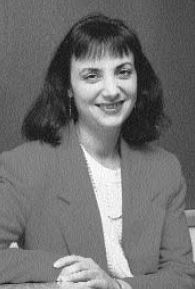by Laura Miguelez ’83
 One of the most striking parallels the apostle Paul comments upon in Scripture is that of the First and Last Adam. The first Adam was to be the exemplar of all that is good in a humanity made in God’s image. Yet as Adam and Eve, who had only known good, chose to know evil in disobedience to their Creator, so follow we.
One of the most striking parallels the apostle Paul comments upon in Scripture is that of the First and Last Adam. The first Adam was to be the exemplar of all that is good in a humanity made in God’s image. Yet as Adam and Eve, who had only known good, chose to know evil in disobedience to their Creator, so follow we.
We, too, determine that God’s ways cannot be best and so choose to go our own ways. Nor do we see this condition as being problematic. When confronted with our failure to do good, we stand behind our first parents, claiming, “I’m only human”– claiming, that is, that we expect to fail in our quest to image a holy God.
Nor do we see how grievous this low expectation can be. We distance ourselves even more from our choices and speak of learning to “love the sinner” and “hate the sin” as though we were somehow capable of separating the two, not acknowledging that sin arises from the very inclination of our hearts. Sin is not ever disembodied “out there” somewhere, but exists in the context of the person committing it.
The only reality is that of the sinning sinner, and this is why Christ’s sacrifice is so pivotal: He died not for sin, but for sinners who could not keep themselves from sinning. We are children of the first Adam, a living being; children of dust. Yet we are called to be children of the last Adam, Jesus Christ, a life-giving spirit; children of heaven.
Jesus Christ–not Adam–is the one who defines for us what it means to be human. He chose to love the sinning sinner by dying on our behalf that we might know the love of God at work in our hearts by His cleansing Holy Spirit.
The basis of our being accepted before God does not change once we commit our lives to Him. We can come before God’s presence only because of what Christ has accomplished; we can remain in God’s presence only on the basis of the same.
And this is the great tension we feel in our earthly sojourn: that in God’s sight, as Martin Luther observed, we are at one and the same time both righteous–by Christ’s nature within us–and sinners–by our own nature. And although we continue to seek to
hide behind our human nature in explaining ourselves to ourselves, the reality is that Christ is the one to whom we should return. And this we will not do unless we understand ourselves to be sinning sinners.
Only we who are sick have need of a physician, and so we are told by Christ to “Go and learn what this means, ‘I desire mercy, and not sacrifice’ For I came not to call the righteous, but sinners” (Matt. 9:12-13).
And herein lies our hope: “Therefore, my beloved brethren, be steadfast, immovable, always abounding in the work of the Lord, knowing that in the Lord your labor is not in vain” (1 Cor. 15:58).
—–
Twenty years ago, the Wheaton Alumni magazine began a series of articles, titled “On My Mind”, in which Wheaton faculty told about their thinking, their research, or their favorite books and people. Former Assistant Professor of Theology, Laura Miguelez ’83 (who has taught at Wheaton since 1998) was featured in the Autumn 2000 issue